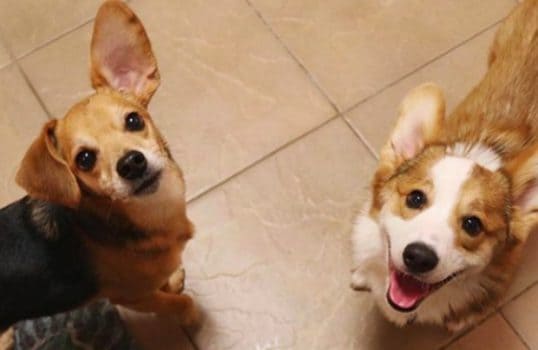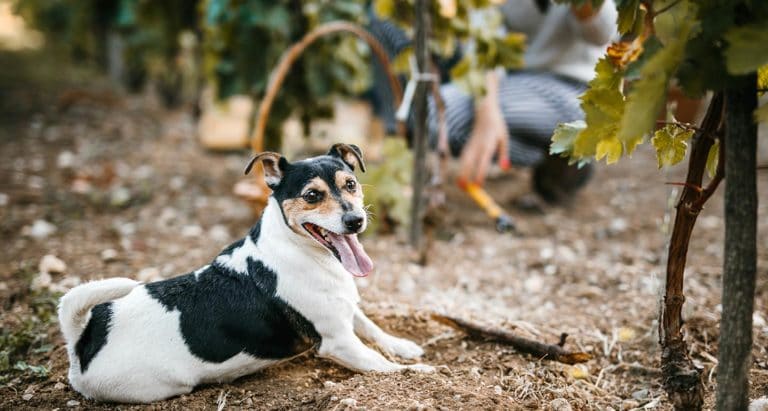Tips for Minimizing Dog Shedding in Spring
When you’re a pet parent, the first signs of spring are hundreds of strands of fur clinging to your clothes and fuzzy tumbleweeds drifting across the floor. You may have already started to dread dog shedding season, which means endless vacuuming, sweeping and lint brushing. It can seem like your pets are shedding faster than you can possibly clean. Try these tips from Dara Forleo, owner of Dara’s Paw Spaw in Peterborough, NH, to get ahead of springtime dog shedding and break that cycle of constantly cleaning up loose fur.
If you adopted a shorthaired pet in hopes that he was one of the non-shedding dogs, you may have been surprised to find that they actually shed more than animals with long fur, and that they, too, need regular grooming. Excessive shedding in dogs is commonly seen in Labs, Pugs, Beagles, German Shepherds and Boston Terriers, says Forleo. “The only true non-shedding breeds are Maltese, Shih-Tzu, Poodles, Bichon Frises, the ‘hair type breeds’ usually in the Toy group of AKC breeds.”
Dogs with coats that have a fur-like texture typically have a topcoat and an undercoat. The undercoat is shed in the spring and summer. Non-shedding dogs have a single coat with a hair-like texture that does not shed. Cats, similarly, shed less if they have a single coat, which is seen on Rex breeds. Designer breed mixes typically have a coat that is hair-like, but they are not guaranteed to not shed. “In -doodle and -poo mixes, it takes multiple generations before the hypoallergenic, non-shedding gene is dominant,” says Forleo.
The best way to manage excessive shedding in dogs is to groom your pets frequently during shedding season, so you remove loose fur before it drops off. You can talk to your groomer to find a shedding management grooming routine that works best for your pet’s coat type. For shorthaired dogs, you can use the FURminator Short Hair deShedding Edge to gently loosen the undercoat. You’ll need a tool like the FURminator Long Hair deShedding Edge For Dogs to push through the topcoat.
“Coats typically have new growth every 2 weeks,” says Forleo. “Grooming schedules are typically on 4-, 6- or 8-week rotation. You should be keeping up with brushing between appointments to keep up with new fur growth. The more grooming, the less shedding.”
You do not need a full wash and cut every time you go to the groomer during dog shedding season. A quick deshedding session can eliminate trapped, shed fur that you may not be able to fully loosen at home. “Deshedding is to blow out the undercoat with a high-velocity dryer. As long as it’s not matted, it can be blown out. Then we go through it with a rake, a really fine slicker, and brush out the whole coat.”
If you own a dog with a long, thick double coat, like a Husky, you may be tempted to have their coat shaved to help reduce shedding. A short-clipped double coat will not actually shed any less, though the shed hairs will be shorter and less noticeable.
You can support healthy shedding by feeding a nutrient-rich dog food diet that is low in fillers and supplemented with omega-3 fatty acids that keep the skin and coat smooth and shiny. Nutri-Vet Shed Defense Max Dog Chewables conveniently add more omega-3s to your dog’s diet.
Pets that do shed typically shed year-round. The shedding tends to increase in the fall and spring, especially as the weather gets warmer.
“When the undercoat is trapped under the topcoat, no oxygen is reaching to the skin. The coat may start to develop mats,” says Forleo. “You do need to keep up a grooming schedule year-round to keep the coat healthy.” Your pet will also better tolerate prolonged grooming during dog shedding season if they are used to being groomed year-round. Brushing can be relaxing for your pet, especially when their coat is healthy and free of mats and tangles afterwards.
![]()
Lindsay Pevny is on a mission to gather science-based information on pet care, training and products, and to use her writing to help other dog parents make informed decisions for their four-legged family members. As a pet copywriter, she works with passionate pet business owners to spread the word about their innovative pet products and services. Get to know her doggy muses, Matilda and Cow, on her personal blog, Little Dog Tips.
Featured Image: iStock.com/HannahWade
Hair Care
Share:












